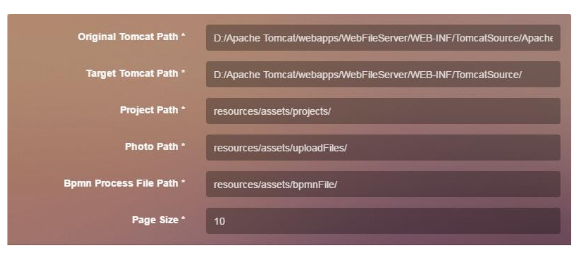ABSTRACT:
One of the major difficulties in web application design is the tediousness of constructing new web pages from scratch. For traditional web application projects, the web application designers usually design and implement web application projects step by step, in detail.
My project is called “automatic generation of web applications and management system.” This web application generator can generate the generic and customized web applications based on software engineering theories. The flow driven methodology will be used to drive the project by Business Process Model Notation (BPMN). Modules of the Project are:database, web server, HTML page, functionality, financial analysis model, customer, and BPMN.
The BPMN is the most important section of this entire project, due to the BPMN flow engine that most of the work and data flow depends on the engine. There are two ways to deal with the project. One way is to go to the main page, then to choose one web app template, and click the generating button. The other way is for the customers to request special orders.
The project then will give suitable software development methodologies to follow up. After a software development life cycle, customers will receive their required product.
DEVELOPMENT TOOLS AND ENVIRONMENTS:
There are four main development tools that I used them to design and develop my project and web service. First, Eclipse is used to develop the project and web service. Second, Apache Tomcat is used as a web host environment for the project and web service. Third, MySQL is used as a data store where data will be saved into. The last one is UML editor that will be used to model a relationship between database and project components.
IMPLEMENTATION:
Implement Plan:
To design the automatic generation of web application and management system project, I will use the spiral software development model,which is a risk driven software process framework . At the first development life cycle,I will finish 40% functionalities of the total project. The 40% functionalities of the whole project will include the BPMN, which is a systemic approach for capturing, designing, executing, documenting, measuring, monitoring, and controlling both automated and non-automated processes to meet the objectives and business strategies of a company.
BPMN:
Business Process Model and Notation (BPMN) is a graphical representation for specifying business processes in a business process model. Business Process Management Initiative (Figure 1) developed BPMN, which has been maintained by the Object Management Group since the two organizations merged in 2005.
Version 2.0 of BPMN was released in January 2011, at which point the name was adapted to Business Process Model and Notation as execution semantics were also introduced alongside the notational and diagramming elements .
jQuery Ajax:
PROJECT CONSTRUCTION:
PROJECT COMPONENT:
System Configuration:
When login into the system,the system administrator needs to setup serval items as Figure 4 shows. The first item is the root folder path of original tomcat and target tomcat folder path where customer tomcat should be saved at. The original tomcat folder has been put with the project together deployed to tomcat service project folder. The second item is to setup the project path where customer’s project should be stored into. The third item is to setup photo path where all upload pictures should be saved. The fourth item is BPMN file path where all upload BPMN process files go to and where the BPMN engine should look for deployed process files. The last one is page size that can determine how many items should show on a list page.
CONCLUSION:
In the web application generator market of North America, Weebly, WordPress, and Website Builder are widely used web application generators, but these web application generators still cannot generate 100% suitable web application projects for their customers. All the web application generators ask their customers to choose a web template first and then the customers need to modify or add more data to the template at their online editor page.
Due to those web application generator, there is no such website page tree diagram which can allow the customers to have an overview of their website constructions. Based on these points, the customers need to know at least how to design and layout their website pages. After the customers have done some adjustments for their websites, the templates can then fit to their business.
The project can generate web applications by clicking one button according to the BPMN (Business Process Model Notation) technology. The BPMN engine will become a middle layer that will lead to the logic of page jumping. The customers can modify the content of their web applications through the administration platform with a website page tree diagram. The customers can also manage their web application data at the data section.
This project provides both generic and customized methods to generate web applications. When using the generic method to generate web applications, the customers need to go to the main page and choose one of the existing web application models and then fill out the template data. By using the customized way to design web applications, the customers should go to the special order page and fill out extra work order forms for the web application support team.
Based on the special orders, the support team will pass those work orders to development department. The development department will give suitable development methodologies such as waterfall, agile, and prototype to fit with the customer requirements and develop these requirements. Based on a selected development methodology, customers will receive their required product after one software development life cycle has been implemented.
Source: California State University
Author: Yu Zhou



